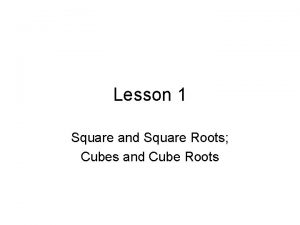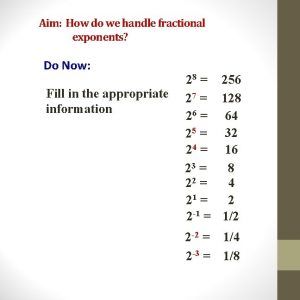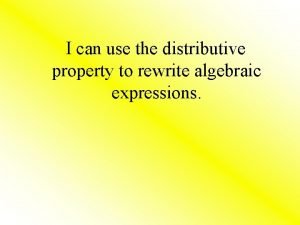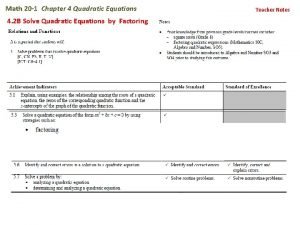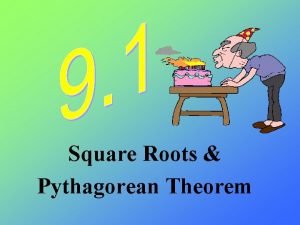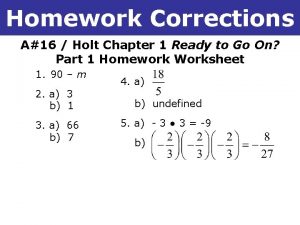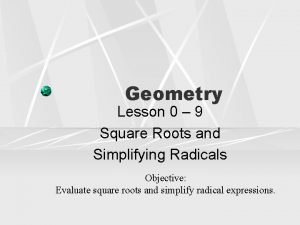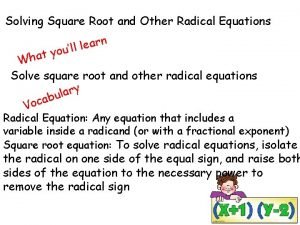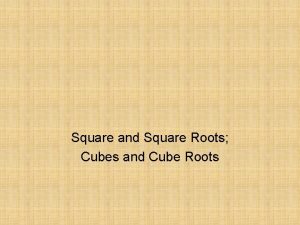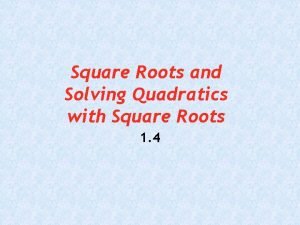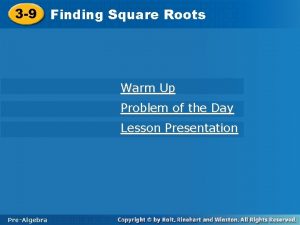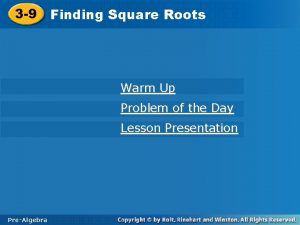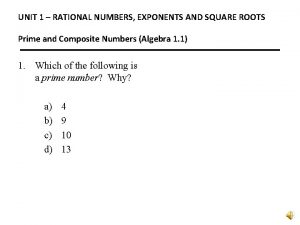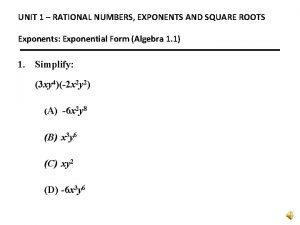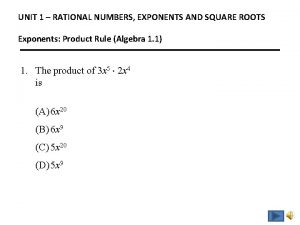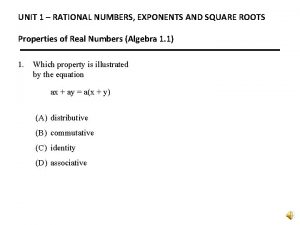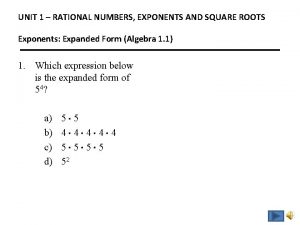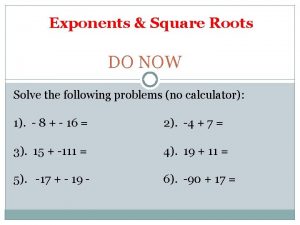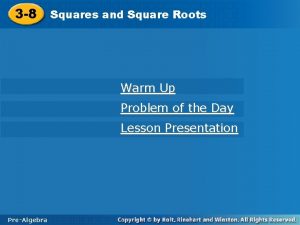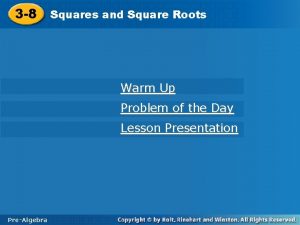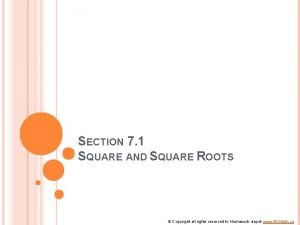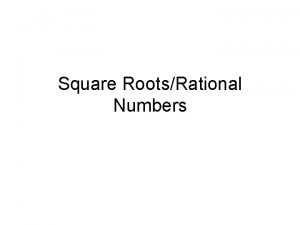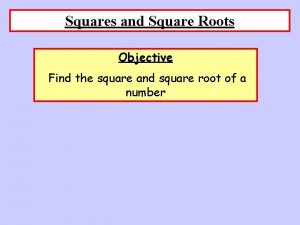Roots and Fractional Exponents You know a square































- Slides: 31

Roots and Fractional Exponents

You know a square root means a number you take times itself to get a given answer.

Square roots were named because they were the lengths of the sides of squares with a given area. For instance a square with area 16 has a side with length 4.

You also know that every positive number has 2 real number square roots. While normally we just care about the positive square root, remember there is also an equivalent negative answer.

There are lots of other kinds of roots besides square roots.

A cube root is the number you take times itself and then times itself again to get a given answer. It is also the side of a cube with a given volume.

Each number has just 1 real number cube root.

The cube root of a positive number is positive. The cube root of a negative number is negative.

Fourth roots, fifth roots, sixth roots, etc. all work similarly to square roots and cube roots.

You can take even roots of any positive number. You will get 2 real number answers.

You can take odd roots of any real number. You will get 1 real number answer.

Simplifying Root Expressions with Variables Take the root of the coefficient. Divide the exponent by the index of the root.

If you don’t get an even answer when you divide … Put the quotient outside the root symbol. Put the remainder as the exponent under the root symbol.

Simplify

Simplify

Simplify Remember square root means the 2 nd root.

Simplify Technically the best answer is Unless it specifies that multiple answers are needed, though, we usually just give the positive answer.

For now we won’t worry about simplifying roots that don’t come out even. However, you can estimate where an answer is by placing it between numbers whose roots you know.

For instance … 13 is between 9 and 16 (and slightly closer to 16 than 9) So must be between 3 and 4 (and slightly closer to 4 than 3) … Estimate 3. 6

For instance … 30 is just a little more than 27 (and much less than 64) So must be a little more than 3 (and much less than 4) … Estimate 3. 1

Fractional Exponents

A fractional power with a numerator or 1 is the same as the corresponding root.

So the original problem … … the answer is 5.

What is Find all answers. ?

What is Find all answers. ?

What is Find all answers. ?

What is ? Find all answers. (There is only 1 answer. )

In a fractional exponent, the numerator (top) is a power the denominator (bottom) is a root

Write as a root, and then simplify:

Write as a root, and then simplify:

Write using exponents.
 Existence and uniqueness of square roots and cube roots
Existence and uniqueness of square roots and cube roots Perfect squares 1-10000
Perfect squares 1-10000 Squares square roots cubes and cube roots
Squares square roots cubes and cube roots Square numbers up to 12
Square numbers up to 12 Dmca square root
Dmca square root Rewrite with rational exponents calculator
Rewrite with rational exponents calculator Simplifying fractional exponents
Simplifying fractional exponents Use the distributive property to rewrite the expression
Use the distributive property to rewrite the expression 6-2 rational exponents
6-2 rational exponents Negative exponents
Negative exponents Quadratic equation
Quadratic equation Vanessa jason www.biology-roots.com
Vanessa jason www.biology-roots.com The roots of american imperialism economic roots
The roots of american imperialism economic roots Hapy nod
Hapy nod You're a poet and you don't know it
You're a poet and you don't know it If you're blue and you don't know where to go
If you're blue and you don't know where to go What are the positive and negative square roots of 6,400?
What are the positive and negative square roots of 6,400? Square
Square Unit 1 the real numbers homework 6 square and cube roots
Unit 1 the real numbers homework 6 square and cube roots Evaluate square root
Evaluate square root Evaluate square root
Evaluate square root Lesson 0-9 square roots and simplifying radicals answers
Lesson 0-9 square roots and simplifying radicals answers Solving square root and other radical equations quick check
Solving square root and other radical equations quick check Know history know self
Know history know self Do deep generative models know what they don’t know?
Do deep generative models know what they don’t know? God of angel armies
God of angel armies Do you know about minecraft
Do you know about minecraft Being asexual
Being asexual Do you know who you are
Do you know who you are I will follow you follow you wherever you go
I will follow you follow you wherever you go 2021 graduation songs
2021 graduation songs Simplifying nonperfect roots
Simplifying nonperfect roots


